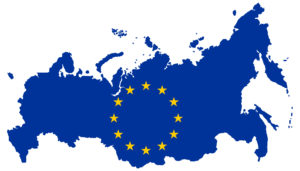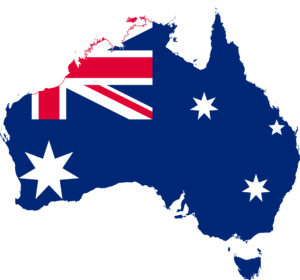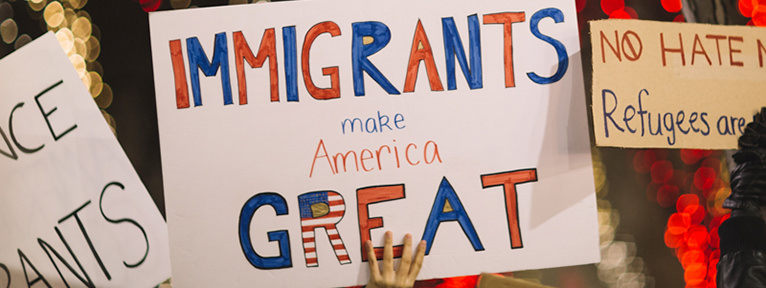Every year, millions of people leave their home countries and move to a new one. They do so for numerous reasons; perhaps they’re seeking adventure, economic opportunity or a better quality of life for themselves and their children. Others seek refuge from political turmoil in their homeland.
No matter the reason, we can examine their numbers to discern trends in global migration. What can be inferred about immigration to the U.S. and abroad — and what can be expected as we get move into the last part of 2017 and beyond? That’s what this article aims to answer. Today we’re looking at the current trends in global migration.
Relevant terms:
Before we look at the these trends, let’s define some common terms.
International Migrants by the Numbers
This chart from the United Nations Population Division breaks down the total number of people living in a country in 2015 other than the one in which they were born. The 25 countries that are home to the largest groups of migrant stock are:
- United States
- Germany
- Russian Federation
- Saudi Arabia
- United Kingdom
- United Arab Emirates
- Canada
- France
- Australia
- Spain
- Italy
- India
- Ukraine
- Thailand
- Pakistan
- Kazakhstan
- South Africa
- Jordan
- Turkey
- Kuwait
- Hong Kong SAR, China
- Iran, Islamic Rep
- Singapore
- Malaysia
- Switzerland
U.S. – Global Leader in Immigration by Absolute Number

With approximately 46.6 million migrants, more people migrate to the United States than any other nation. However, that’s just absolute numbers; while the U.S. has the most immigrants in the world, that makes up only 14 percent of its population. This “immigrant share” is much lower than the percentages seen in many Middle East countries including the United Arab Emirates, Qatar and Kuwait, where approximately three out of four people are international migrants.
In addition, 28 percent of Australia’s population is foreign born and 22 percent of Canada’s is foreign born. So while the U.S. tops the list in absolute numbers, these countries have a greater share of their population that was born in a different country.
Other Countries Leading Global Immigration

In absolute numbers, Germany was the second most popular destination country for international migrants, followed by the Russian Federation.
As a percentage of the country’s population, the numbers are highest in the following Middle East countries:
- International migrants make up a whopping 88.4 percent of the total population in the United Arab Emirates
- International migrants make up 75.7 percent of the total population in Qatar
- International migrants make up 73.6 percent of the total population in Kuwait
Is migrant flow increasing?
In terms of absolute numbers, yes — the numbers continue to climb. But as a share of the global population, the numbers budge only slightly. Let’s take a look:
- The absolute numbers of international migrants has grown from approximately 79 million in 1960 to almost 250 million in 2015, a 200 percent increase. So by sheer numbers, there are far more international migrants today.
- But by percentage of the world’s population, international migrant numbers today are only slightly higher than 1960 numbers. The world population in 1960 was about 3 billion; in 2015, that number was 7.3 billion. When you calculate these ratios, you find that in 1960, 2.6 percent of the global population did not live in their birth countries; in 2015, that figure rose only slightly, to 3.3 percent.
Trends of note
1. The Mexico-U.S. migration path: Net flows are reversing
One of the world’s biggest pathways for international migration has always been from Mexico to the United States. As of 2015, about 12 million Mexico-born people were living in the U.S. But as Pew Research notes, these numbers are reversing; more Mexican immigrants have returned to Mexico from the U.S. than have migrated here since 2009.
2. India to the Middle East becomes a major pathway
Another notable migration path is from India to the UAE. As of 2015, almost 3.5 million India-born people lived in the UAE. This number indicates a major trend still for years to come: The number of Indians living in the Middle East has grown from 2 million in 1990 to more than 8 million in 2015.
3. Nearly 1 in 5 migrants live in the world’s top 20 largest cities
And the percentages of international migrants living in these cities is notably high. For example: 33 percent of the total population of Sydney, Auckland, Singapore and London is international migrants; and 25 percent of the total population of Amsterdam, Frankfurt and Paris is international migrants.
Global Refugees & Asylum-Seekers

Trends to note here include:
- The number of people who were forcibly displaced in 2015 was the highest it’s been since World War II. Worldwide, an astounding 15.1 million people were considered refugees. This huge number is largely attributed to the conflict in Syria, where about 8.6 million people were displaced just in 2015.
- Germany was the single largest recipient of worldwide refugees in 2015 — nearly 442,000 asylum-seekers moved to that country that year. If you factor out this large inflow of refugees, Germany still overwhelmingly holds the number 2 spot for countries having a foreign-born population. More than 12 million people came to Germany in 2015.
- Worldwide, the number of people seeking asylum grew dramatically from 2014 to 2015, with 558,000 applications pending at the end of 2014 to 3.2 million pending asylum applications globally by the end of 2015.
- The European Union received 1.2 million asylum applications in 2015, more than double the asylum applications filed in 2014. This is attributed to record numbers of asylum seekers from Syria, Afghanistan and Iraq.
- A third of the people who filed for asylum in the EU were minors; tragically, one in 4 of this group was judged to be unaccompanied by an adult.
- The majority of asylum seekers look to neighboring countries to host them, however, even if that host country is a developing country itself. For example, most of the Syrian refugee population in 2015 lived in Turkey (2.2 million), Lebanon (1.2 million) and Jordan (almost 630,000).
- The world is facing a new global refugee crisis in Southeast Asia. As of October 2017, 800,000 forcibly displaced Rohingya people from Myanmar have poured into Bangladesh. They are escaping what UN human rights officials are calling “a textbook example of ethnic cleansing.”
American & European views on their migrant populations

What do Americans think of immigrants?
According to a 2016 Pew study:
- 63 percent of U.S. adults felt that immigrants strengthen the country through their hard work and talents
- 27 percent feel immigrants are a burden on the country by taking jobs, housing and health care
This is a reversal of a similar study conducted in the 1990s, when 63 percent of respondents said immigrants were a burden on the U.S. and only 31 percent believed immigrants helped the country.
Perhaps unsurprisingly, certain groups were found to hold more favorable views of immigrants than others. For example, Democrats were more likely than Republicans to say immigrants benefit the U.S., and younger people held more positive views than older people.

What do Europeans think of immigrants?
The influx of refugees in Europe has deeply divided people in the region. In a 2016 study of 10 European countries, it was found that:
- Half or more of the adults in eight out of the 10 nations fear that refugees will boost the chances of terrorism in their countries
- Half or more of the adults in five of the 10 countries believe refugees will harm their economies by taking jobs and social benefits
- Perhaps most shockingly is this finding: In none of the 10 countries surveyed did a majority of the respondents say that increasing ethnic diversity would be a positive thing for their nation.

What do Australians think of immigrants?
Australia is another nation where emotions run deep on the matter of immigration. Earlier this year the prime minister announced vast immigration and naturalization reform, seemingly in response to a less welcoming attitude among his countrymen. Findings of a 2016 study from the Scanlon Foundation support this theory. Among its key takeaways:
- As many as six million Australians feel negatively about Muslims
- 20 percent of non-White Australians born abroad reported discrimination in 2016; more than a third of these felt they were being denied jobs or promotion because of their ethnicity
- The news isn’t all bad: 66 percent of respondents said that receiving migrants from many nations makes Australia better
Will the United States continue to dominate global migration?

If one only looked at the historical data for an indication of this, the answer would be a resounding “yes.” But immigration in a Trump-era America is uncertain at best. Members of Congress have put forth legislation that could change the categories of immigration and drastically reduce the number of visas granted across the board. Others are taking aim at certain family based categories. Confusion and uncertainty reign here; only time will tell.
Additional statistics and analysis provided by Pew Research Center and the Global Migration Data Analysis Centre, International Organization for Migration.
Are you eligible to apply for a Green Card?
Are you currently living in the United States?
Have you lived in the US for more than 3 months?
Did you enter the United States with an active visa or green card?
Are you married to a US citizen?
Do you have an immediate family member that is a U.S. Citizen or is a Green Card holder?

Analyzing Eligibility
We're sorry.
You are probably not eligible to apply.
If you would like to apply for a Green Card, instead of a Renewal, we can help you.
Congratulations!
You are eligible to apply for a Green Card with SimpleCitizen!
